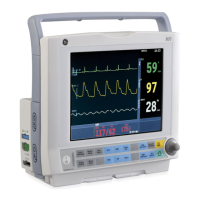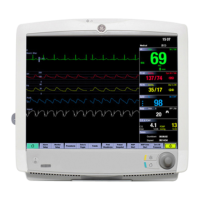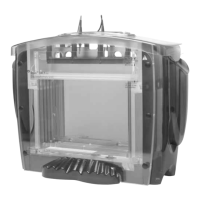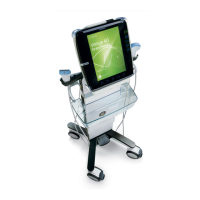What to do if GE HEALTHCARE B40 Medical Equipment displays 'Check sample gas out'?
- LLorraine MoralesSep 3, 2025
If the GE HEALTHCARE Medical Equipment displays 'Check sample gas out', the sample gas outlet is blocked. Remove the blockage from the sample gas outlet.





